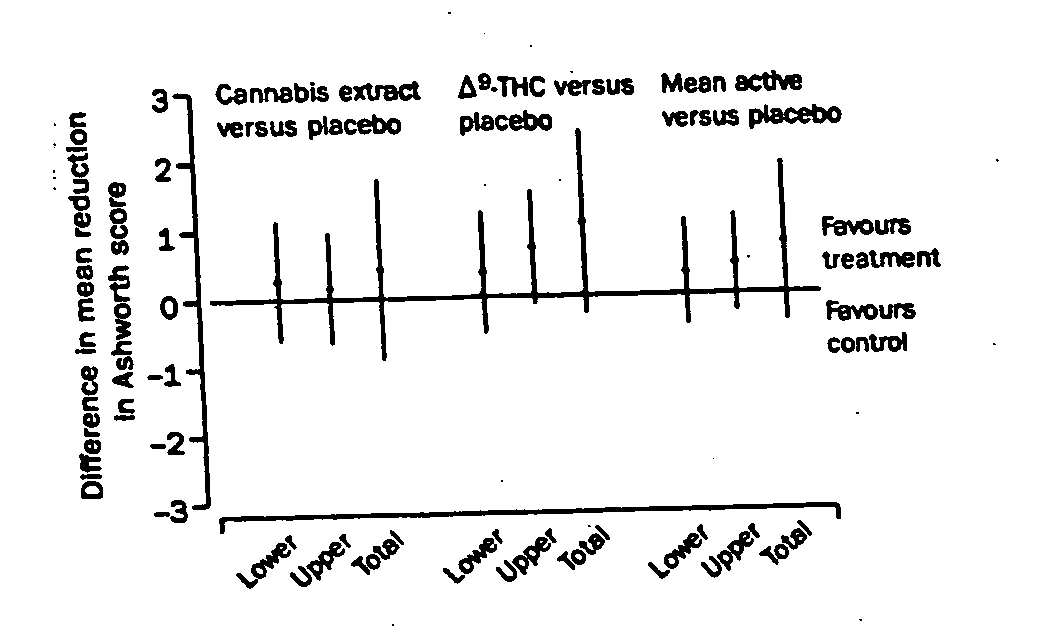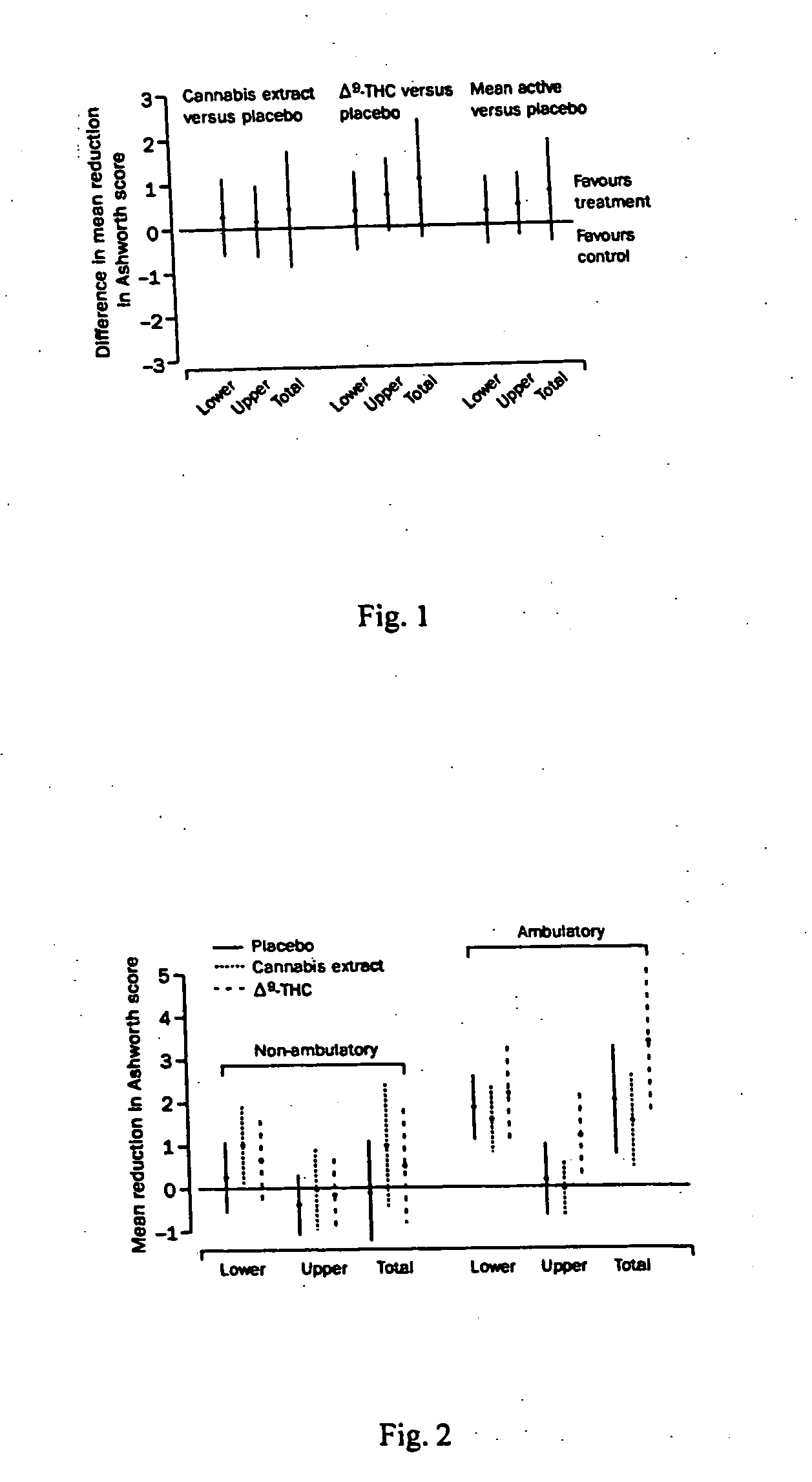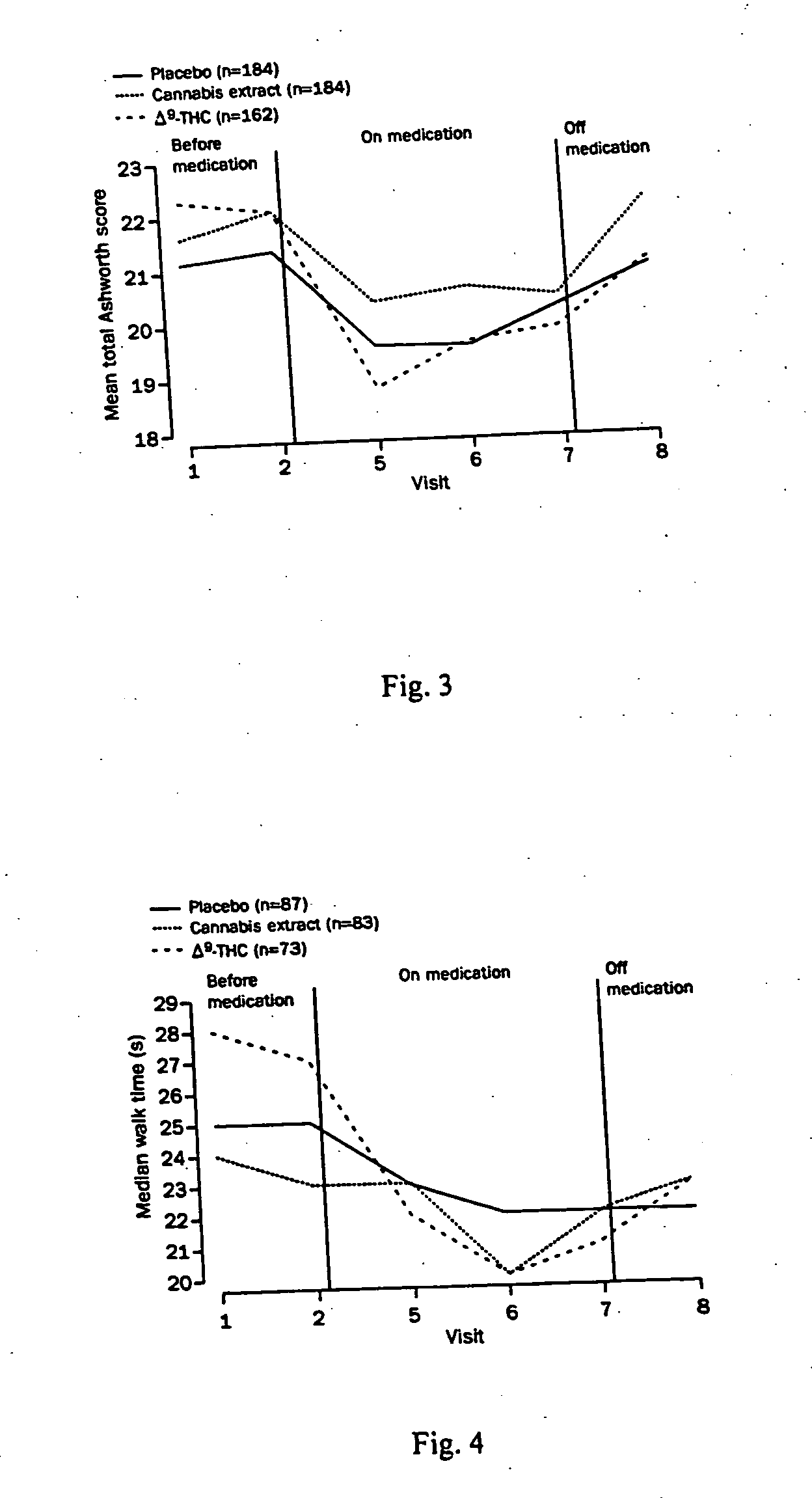Delta-9-THC compositions and methods for treating symptoms associated with multiple sclerosis
a technology of compositions and thc, applied in the field of delta-9-thc compositions and methods for treating symptoms associated with multiple sclerosis, can solve the problems of nerve damage or breakage, considerable pain, and disruption of nerve conductivity electrical impulses to and from the brain, so as to reduce ms relapses, prevent side effects, and improve symptoms
- Summary
- Abstract
- Description
- Claims
- Application Information
AI Technical Summary
Benefits of technology
Problems solved by technology
Method used
Image
Examples
example 1
[0058] A study was performed to asses the use of cannabis extract and delta-9-THC in treating various symptoms associated with MS in a randomized, placebo-controlled study. Patients aged 18-64 years with clinically definite or laboratory-supported multiple sclerosis who had exhibited stable disease for the previous 6 months, with problematic spasticity (Ashworth score of ≧2 in two or more lower limb muscle groups) were included in the trial. Patients with ischaemic heart disease, those with active sources of infection, and those taking medication such as beta interferon (that could impact spasticity) were excluded.
[0059] Patients were randomly assigned to receive one of two active treatments or placebo. Active treatment consisted of either synthetic delta-9-THC (Marinol, Solvay Pharmaceuticals, Atlanta, USA) or a cannabis extract, containing delta-9-THC and cannabidiol as the main cannabinoids (Cannador, Institute for Clinical Research, IKF, Berlin, Germany). Capsules were manufact...
example 2
[0068] Secondary outcomes were also measured in the above-described study. Such secondary outcomes included the Rivermead mobility index (See e.g. Collen, F. M. et al., The Rivermead mobility index: a further development of the Rivermead motor assessment. Int. Disanil. Stud. 1991; 13:50 54), a timed 10 meter walk, four selfcompletion questionnaires—the United Kingdom neurological disability score (See e.g. Sharrack, B., Hughes R. A., The Guy's neurological disability scale (GNDS): a new disability measure for multiple sclerosis. Mult. Sder. 1999; 5: 223-33), and a series of nine category-rating scales. For the category-rating scale assessment, patients were asked to assess how their symptoms had been over the previous week compared with how they were just before the study started. Categories included irritability, depression, tiredness, muscle stiffness, tremor, pain, sleep, muscle spasms, and amount of energy. Data are discussed below.
[0069] With respect to secondary outcome measu...
example 3
[0072] At visit 8 in study described in Examples 1 and 2, patients were asked specific questions about whether treatment had improved pain, tremor, spasticity, or bladder symptoms. Table 3 shows patient responses to those questions. Overall, more patients perceived an improvement in spasticity and pain when taking the active treatments than when taking placebo. Difference in perception of improvement in tremor was not statistically significant and no treatment effect on bladder symptoms was identified. Although there was no stratification for these specific symptoms between groups, the groups were broadly balanced for these symptoms apart from bladder symptoms, where there were fewer patients with urinary symptoms in the group taking, delta-9-THC.
[0073] There was a significant association between the actual treatment and the treating doctors' assessment of whether the patient was on active treatment (p<0.001). According to the treating doctors' assessment, 71% (n=140) of the cannab...
PUM
| Property | Measurement | Unit |
|---|---|---|
| body weight | aaaaa | aaaaa |
| soft | aaaaa | aaaaa |
| electrical | aaaaa | aaaaa |
Abstract
Description
Claims
Application Information
 Login to View More
Login to View More - R&D
- Intellectual Property
- Life Sciences
- Materials
- Tech Scout
- Unparalleled Data Quality
- Higher Quality Content
- 60% Fewer Hallucinations
Browse by: Latest US Patents, China's latest patents, Technical Efficacy Thesaurus, Application Domain, Technology Topic, Popular Technical Reports.
© 2025 PatSnap. All rights reserved.Legal|Privacy policy|Modern Slavery Act Transparency Statement|Sitemap|About US| Contact US: help@patsnap.com



